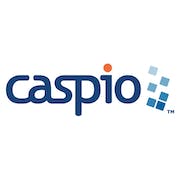Looking for the best IT service software for your business? Check out our comprehensive buyers guide to find the perfect solution to fit your needs. Get expert advice today!
IT service delivery can make or break an organization's success. With increasing demands for efficiency, flexibility, and cost-effectiveness, companies need a reliable and robust IT service software system to stay ahead of the competition. But with a wide range of options available on the market, choosing the right one can be a challenging task for any business. In this buyers guide, we will help you navigate the maze of IT service software solutions and find the perfect fit for your needs. From essential features to key considerations, this guide will provide you with authoritative insights to make an informed decision and take your IT service delivery to the next level.
What is an IT service software?
This tool, also known as ITSM, refers to a collection of methods employed to manage and deliver IT services. In essence, it is a way for businesses to streamline their IT operations and support their end-users more effectively. Here are some of its common use cases:
- Incident management: This involves the registration, classification, investigation, and resolution of incidents that cause disruptions or problems with IT services.
- Change management: ITSM involves managing changes to IT infrastructure and services in such a way that disruptions are minimized, and the impact on end-users is negligible.
- Problem management: This involves identifying the underlying causes of recurring incidents, and taking steps to prevent them from occurring again in the future.
- Asset management: It tracks the hardware and software assets that an organization uses, ensuring proper procurement and disposal of the assets.
- Service catalogue: A service catalogue is a list of all IT services that an organization offers to its end-users, including service-level agreements, service descriptions, and pricing.
IT service software is useful for businesses that rely heavily on IT infrastructure to function, such as finance, healthcare, and retail. Typically businesses with a large number of employees, multiple sites, complex IT environments and considerable IT infrastructure, benefits the most from utilizing this technology. 56.1% respondents of a survey claim to be happy with their ITSM solution, yet 95.6% plan to renew their existing agreements.
What are the benefits of adopting an ITSM solution?
This sophisticated tool provides a centralized platform for managing and organizing IT-related tasks and activities. It empowers companies with the ability to streamline their IT operations, increase productivity, and enhance their overall service quality. Here are some of its primary benefits:
- Improved service delivery - With IT service software, businesses can automate their service delivery processes. This, in turn, ensures faster and more reliable service delivery to customers, leading to increased customer satisfaction and retention.
- Proactive problem resolution - An IT service platform can also help businesses detect issues before they escalate into major problems. By identifying problems early on, businesses can proactively resolve issues, minimizing the impact on customers.
- Increased productivity - By automating workflows and processes, this technology frees up valuable time for IT teams, enabling them to focus on higher-value tasks and projects. This, in turn, leads to increased productivity and better overall performance.
- Better collaboration and communication - It also enables IT professionals and other departments to collaborate effectively and efficiently. Real-time communication, knowledge sharing, and collaboration tools streamline workflows and enhance team performance.
- Enhanced visibility and control - ITSM technology provides businesses with complete visibility and control over their IT operations. Real-time monitoring and reporting tools provide insights into IT performance, enabling businesses to identify bottlenecks and areas for improvement.
- Cost savings - This application can help businesses save costs in various ways, including optimized resource utilization, reduced downtime, and streamlined workflows.
10 key features of an IT service platform
Here are the top 10 common features that make an ITSM tool so valuable for businesses:
1. Incident management:
It allows you to automate the process of logging, tracking, and resolving incidents. This streamlines the process, allowing your IT support team to focus on larger issues rather than time-consuming administrative tasks.
2. Problem management:
With this system, you can identify recurring problems and root causes, making it easier to create long-term solutions and improve overall system performance.
3. Change management:
An IT service program helps you to manage changes to your IT systems, ensuring that they are planned, tested, and implemented correctly to minimize disruption to your business operations.
4. Asset management:
Organizations can track and manage IT hardware and software assets, ensuring that they are properly maintained and monitored with the use of comprehensive IT asset management software.
5. Service catalogue:
It provides a centralized location for all services offered by the IT team, allowing anyone in the organization to request a service and track its progress.
6. Knowledge management:
A ITSM app includes a knowledge base that provides the IT team with a wealth of information for solving issues, ensuring that they have the necessary resources at their fingertips to resolve complex problems.
7. SLA management:
It allows businesses to set up and monitor service level agreements (SLAs) with customers and internal teams, ensuring that everyone knows the expectations and goals for service delivery.
8. Reporting and analytics:
It also provides business intelligence reports that help organizations identify trends, anomalies, and areas of improvement, supporting data-driven decision-making.
9. Incident prioritization:
This tool allows incidents to be automatically prioritized based on the impact and urgency of the issue, ensuring that the most critical incidents are addressed first.
10. Integration:
It can be integrated with other critical business systems, such as finance, HR, and sales, creating a better flow of data between teams and departments.
What to consider when investing in an IT service program?
Technology has revolutionized the way businesses operate today. One of the key areas that have been impacted by technology is IT service management. Businesses now have access to a variety of IT service software solutions that make it easier to manage their IT services. However, not all solutions are created equal, and it is essential for businesses to make the right choice. Here are some factors that businesses should consider when purchasing one.
- Business needs: The first factor that businesses should consider is their specific IT service needs. Different businesses have different needs, and a solution that works well for one business may not be suitable for another. Therefore, it is important to identify the specific IT service needs of the business and choose software that can meet those needs.
- Scalability: As businesses grow, their IT service needs will change. Therefore, it is important to choose an IT solution that can scale with the business. The one you select should be able to handle the increased workload as the business expands without affecting performance.
- User-friendliness: It should be user-friendly and easy to use. Employees should be able to navigate the app without any specialized training. Additionally, the it should have a clean and intuitive interface.
- Integration: The system should integrate with the existing IT infrastructure of the business seamlessly. This includes integration with other applications such as customer relationship management and enterprise resource planning systems.
- Security: It should also have robust security features to protect sensitive data. The software should have features such as access controls, data encryption, and secure authentication.
- Reporting and analytics: The solution should have reporting and analytics features to help businesses measure the performance of their IT services. This includes tracking service level agreements, monitoring service desk activity, and identifying potential areas for improvement.
- Customer support: Businesses should choose this IT tool from a vendor with a good reputation for customer support. The vendor should offer support services such as training, technical support, and software updates.
Industry trends for IT service software
As we move into 2024, the world of IT service software is continually evolving and advancing. This year, we can expect to see some significant trends emerging that will shape this landscape.
Trend #1
One such trend is the rising demand for smart analytics. Organizations will increasingly rely on software that can analyze vast quantities of data in real-time and provide actionable insights.
Trend #2
Another trend we will notice is the growing adoption of cloud solutions. Enterprises will continue to prioritize cloud-based solutions as they make the shift towards a more flexible, scalable, and agile IT infrastructure.
Trend #3
In addition to this, we can expect to see the integration of AI and machine learning, particularly in the area of automation and service delivery. A recent Gartner survey notes that the number of enterprises implementing AI has grown 270% in the past 4 years; more than half of these companies are also considering or applying some form of AI for ITSM.
Trend #4
Last but not least, cybersecurity will remain an essential focus for businesses this year, with companies investing in advanced threat detection and prevention software to stay ahead of potential threats. As we move beyond 2024, we can anticipate that these trends will continue, driving the evolution of ITSM technology for many years to come.
Conclusion
In conclusion, IT service software is vital for the efficient management and delivery of IT services within an organization. Integrating this program offers numerous benefits, making IT service software a crucial investment for any modern business. Businesses that invest in such a comprehensive solution reduce operational costs, and achieve higher levels of service excellence. As technology evolves, leveraging such a system will be crucial for maintaining a competitive edge and meeting the dynamic needs of modern enterprises.








